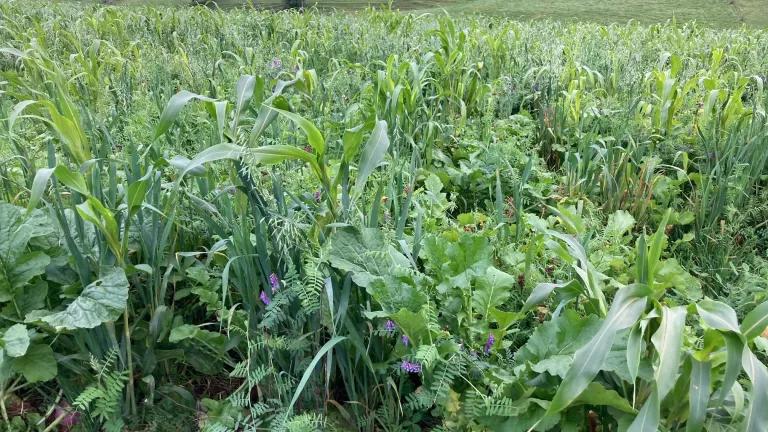New Wisconsin Cover Crop Bill Helps Farmers Save Money
Governor Evers signed into law a bill that advances water quality and authorizes a program that offers farmers $5 per acre savings on their crop insurance if they plant cover crops, a regenerative agriculture practice.

Diverse mix of cover crops in a Wisconsin field
This blog is co-authored by Margaret Krome, Policy Director at Michael Fields Agricultural Institute (MFAI), a nonprofit organization in Southeast Wisconsin. The Institute works to increase agricultural resilience through stakeholder-guided programming that addresses pressing economic, social, and environmental issues.
Today Governor Evers signed into law a bill (AB 727) that advances water quality in Wisconsin and authorizes a program that offers Wisconsin farmers $5 per acre savings on their crop insurance if they plant cover crops, a regenerative agriculture practice. This makes Wisconsin the fourth state to offer such a program after Iowa, Illinois, and Indiana.
Cover Crops in Wisconsin
Cover crops are a key practice for improving soil health in Wisconsin, and soil health can in turn improve water quality, improve habitat for increased biodiversity, help farmers adapt to a changing climate, and sequester carbon to fight climate change. Wisconsin is one of the top 10 states planting cover crops according to the 2017 Census of Agriculture, yet only 6% of Wisconsin cropland uses cover crops. Crop insurance incentives like this program may be one way to get more farmers planting cover crops on their fields.
Federal Crop Insurance Program
The Federal Crop Insurance Program (FCIP) is used by most commodity crop farmers in the Midwest, and some lenders require farmers to enroll in crop insurance to be eligible for loans. A 2019 survey conducted by the Michael Fields Agricultural Institute found that two-thirds of farmers who had not previously planted cover crops would consider doing so with a crop-insurance incentive program. Two-thirds of those who had planted cover crops would likely plant more.
Benefits of Cover Crops
From growers in Wisconsin’s Central Sands facing concerns about nitrates in drinking water to dairy and livestock farmers statewide concerned about erosion from their row crop fields, many Wisconsin farmers benefit from cover crops planted in a timely manner. Such crops can keep the ground protected during months of exposure to winter and spring rains. Cover crops can also interrupt weed and insect and disease reproductive cycles and can make the soil more like a sponge – absorbing water during major rain events and making it available during drought conditions.
Looking Forward
Now that the Wisconsin legislature has passed and the Governor has signed it, MFAI and stakeholders in the state will look forward to working with state agencies like the Department of Agriculture, Trade, and Consumer Protection (DATCP) and the Department of Natural Resources (DNR) to implement the program with the goal of farmers being able to take advantage of it in the fall.
With Wisconsin having joined four other states to offer an incentive program, it makes sense for USDA and Congress to create a national program, like the Pandemic Cover Crop Program offered this year and last, so that farmer in any state can receive a good stewardship discount for soil health building practices.




